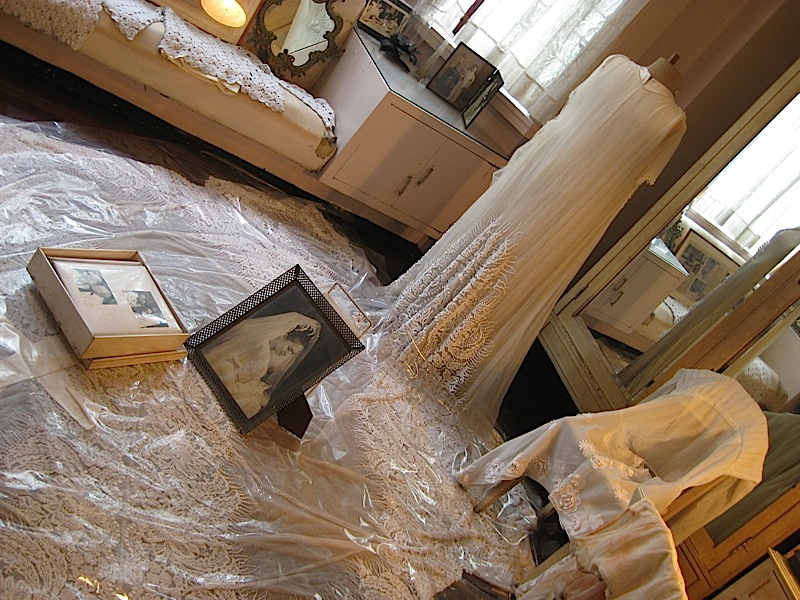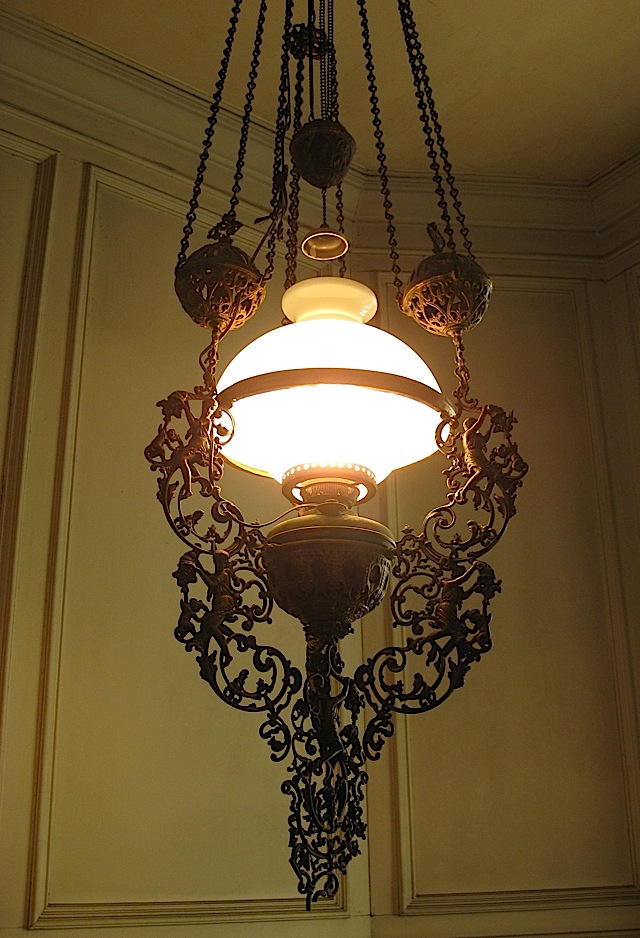
November 25, 2010
Smoggy afternoon in the city
From another balcony on the other side of the Hotel Sofitel Philippine Plaza Manila, a view of the City of Manila with the small white yachts docked at the Manila Yacht Club. The concrete bunker in the foreground is the Folk Arts Theater. Its formal name is Tanghalang Francisco Balagtas, after one of the Philippines' greatest poets, though no one I know has ever called it that. Imelda Marcos had this covered amphitheater built in 1974 especially for that year's Miss Universe Pageant, and since then has been used mostly for concerts and religious gatherings. In more recent years, however, it has been quite neglected and ignored as a concert venue.


November 24, 2010
Unknown jungle
A view of Pasay City from a balcony of Hotel Sofitel Philippine Plaza Manila. Except for the Ninoy Aquino International Airport and the Cultural Center of the Philippines, I rarely have reason to go to Pasay and know next to nothing about it.
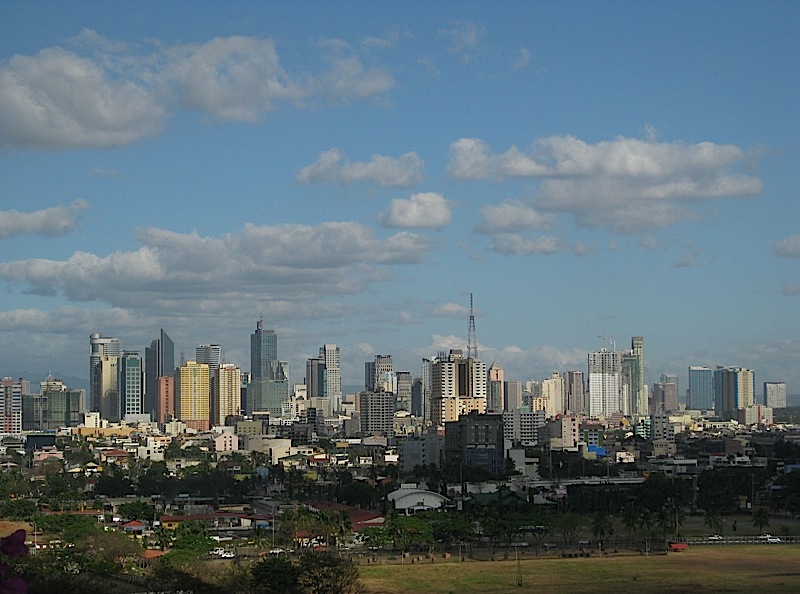

November 23, 2010
Easy to miss
From the road, the ancestral house of the Legarda family looks like any of the few 1930s houses in Manila that survived World War II—though better maintained than most—and belies the wealth of history that lies within. The garden in front is planted with many herbs which are used to season the dishes served in the restaurant.
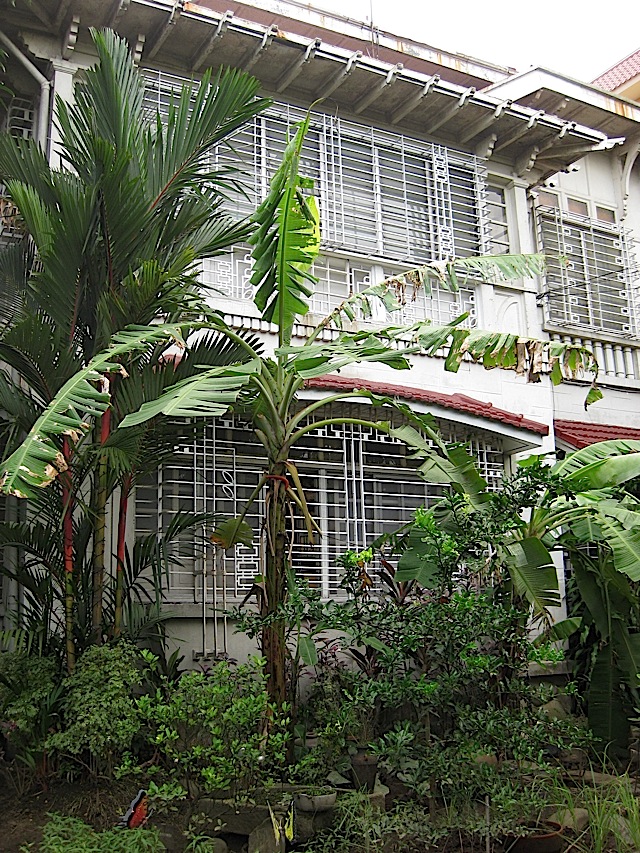
Only this small wooden sign on the privacy wall announces that the house is the proud location of La Cocina de Tita Moning. • LEGARDA ANCESTRAL HOUSE #9
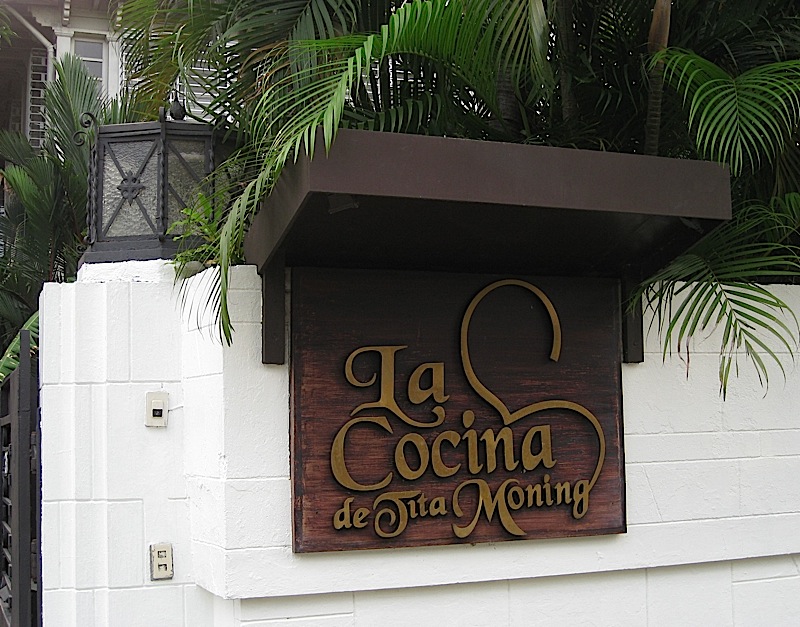

Only this small wooden sign on the privacy wall announces that the house is the proud location of La Cocina de Tita Moning. • LEGARDA ANCESTRAL HOUSE #9

November 22, 2010
Old world elegance
As I mentioned at the start of this series about the ancestral home of the Legarda family, the house is now also a fine dining restaurant called La Cocina de Tita Moning. Appetizers are served in the sala (living room) while you wait for your table in the dining room to be prepared. All the china, glassware and silverware on each table were actually used by the family and their guests across three generations, and the beautiful table settings are complemented by elegant Italian glass birds of different shapes and sizes. The menu of the restaurant are from recipes which date back to the time of Alejandro and Ramona—European and Filipino family favorites and special occasion dishes served to their distinguished guests. La Cocina de Tita Moning is operated by the long-time servants of the Legarda family, and the small scroll on the table introduces each of them and tells their stories. • LEGARDA ANCESTRAL HOUSE #8


November 21, 2010
White
November 20, 2010
Ornate whimsy
November 19, 2010
Another hobby
Aside from being an avid photographer, Dr. Alejandro Legarda was also an amateur radio operator and a member of the Philippine Amateur Radio Association. He had a room specially built for his radio equipment on the third level of their house and when he got too old to walk up the stairs, everything was moved to a room on the ground floor, where they remain on display. However, the equipment that you see here are actually his newer ones, the older equipment having been donated to a museum. Because of his hobby, Alejandro once saved a boat from a storm at sea and received an award for it. • LEGARDA ANCESTRAL HOUSE #5
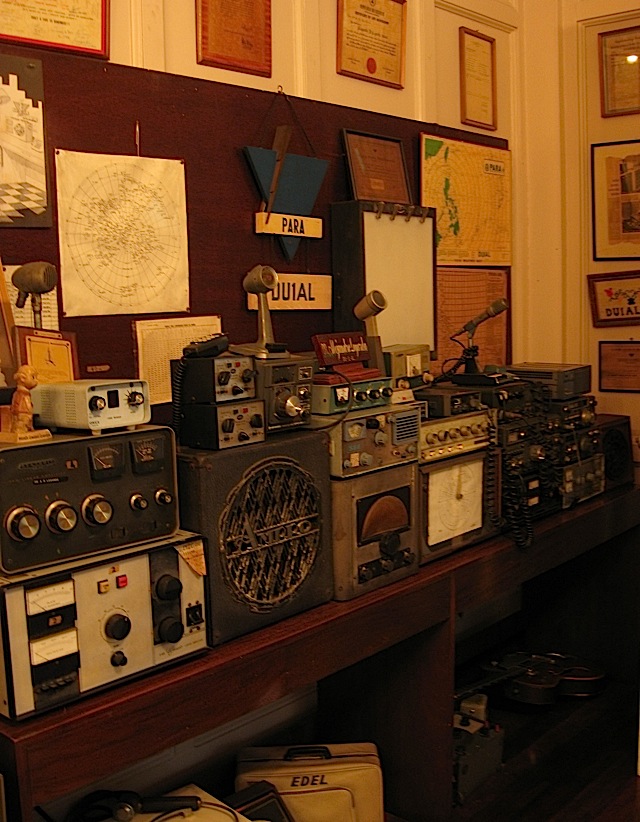

November 18, 2010
Hobby
Dr. Alejandro Legarda was an avid amateur photographer. He kept his own dark room in their home and was one of the first members of the Camera Club of the Philippines; he remained a member until his death in 1993. His now-antique cameras and other accouterments of early to middle 20th century photography are on display in their own room at the Legarda ancestral house. According to the guide, most of the photos in the house were taken and developed by Alejandro. • LEGARDA ANCESTRAL HOUSE #4


November 17, 2010
Victorian nightmare
Alejandro Legarda was an Obstetrician & Gynecologist and had a clinic in his house. In fact, one of his sons was born in this very clinic. Yes, the skeleton is real; Alejandro used it when he was in medical school. Pardon the title, but I couldn't help it; this clinic just reminds me of Victorian sanatoriums and asylums I see in movies • LEGARDA ANCESTRAL HOUSE #3
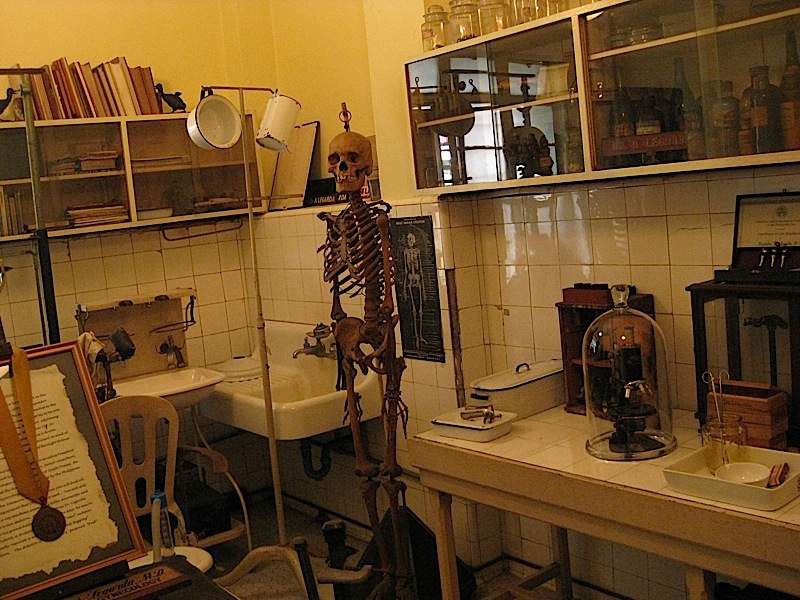

November 16, 2010
Pride of place
The interiors of the Legarda ancestral house is a perfect example of American colonial era home design in Manila. I will not be the only Manileño to say that it reminds me of my own grandmother's house. What I find absolutely amazing is how everything—from the furniture to the bric-a-brac—is wonderfully preserved. It is to the Legarda family's credit that the younger generations resisted the urge to modernize the home (well, except for the air-conditioner, that is).
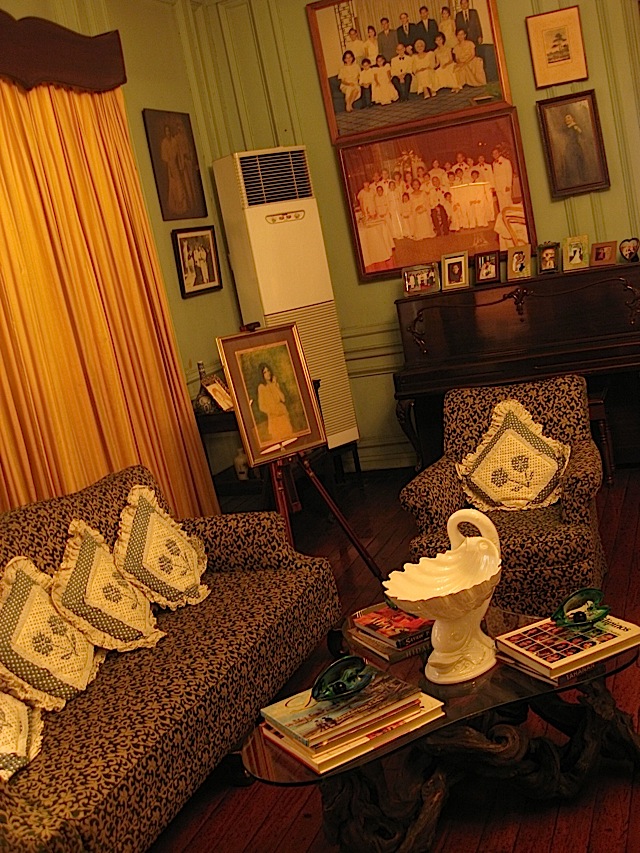
The living room has two sets of seating. The one above flanked by family photographs, and another directly across, above which hangs the centerpiece of the room: a painting by Filipino artist Felix Resurreccion Hidalgo (21 February 1855–13 March 1913), a contemporary and close friend of Philippine National Hero Jose Rizal. Titled "La Inocencia," it is still in its original Art Noveau frame and is believed to be a painting of Hidalgo's mistress in France. • LEGARDA ANCESTRAL HOUSE #2
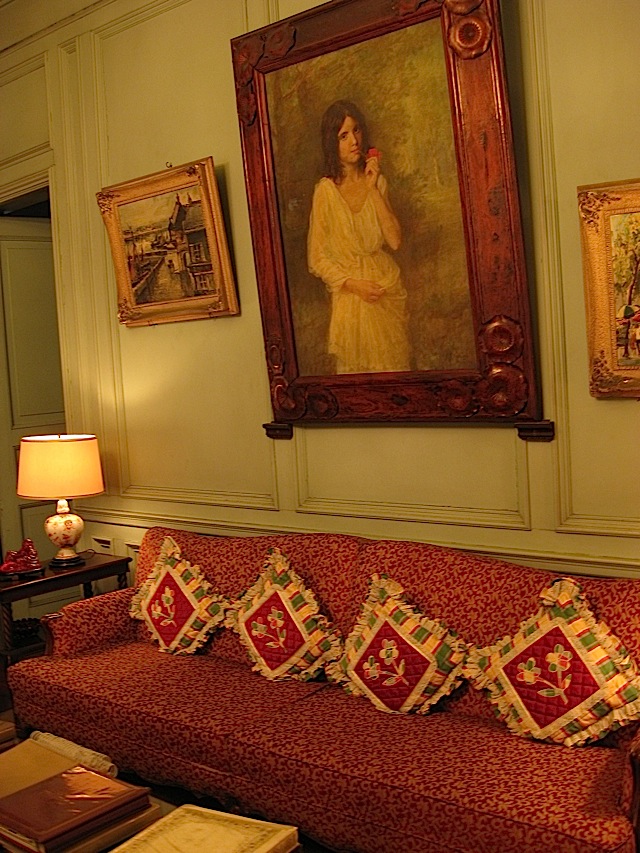

The living room has two sets of seating. The one above flanked by family photographs, and another directly across, above which hangs the centerpiece of the room: a painting by Filipino artist Felix Resurreccion Hidalgo (21 February 1855–13 March 1913), a contemporary and close friend of Philippine National Hero Jose Rizal. Titled "La Inocencia," it is still in its original Art Noveau frame and is believed to be a painting of Hidalgo's mistress in France. • LEGARDA ANCESTRAL HOUSE #2

November 14, 2010
Ancestral home
Welcome to the home of Alejandro Legarda and his wife Ramona Hernandez, now a museum and fine dining restaurant called La Cocina de Tita Moning (The Kitchen of Aunt Ramona). Built in 1937, it was one of Manila's first art deco houses. It is located along San Rafael Street in the San Miguel district of Manila which, before the war, used to be one of the city's most elegant neighborhoods and home to many of Manila's most elite families. Malacañang Palace, the official residence of the President of the Philippines, is also in the San Miguel district. In the next few days, we will be touring this elegant house where Alejandro and Ramona raised four children and which was used by three generations of the Legarda clan. • LEGARDA ANCESTRAL HOUSE #1
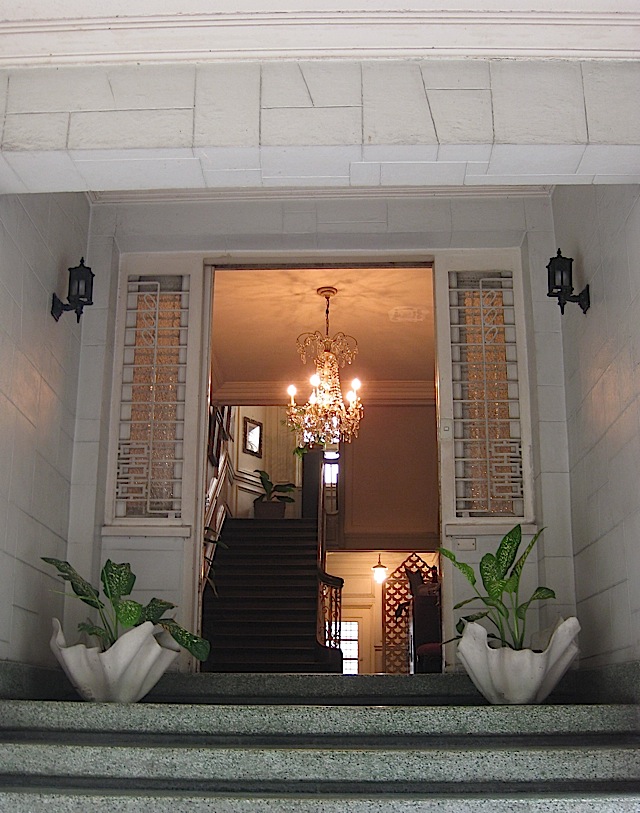

November 13, 2010
Chinese pastry
Probably the best Chinese bakery in the metro is Ho-land in Binondo, Manila's Chinatown. Their specialty is hopia, flaky puff pastry filled with a sweet mung bean paste—delicious, especially when freshly-baked. They also have mooncakes, tikoy (a glutinous rice cake), peanut cakes, and other Chinese delicacies. They've also expanded the hopia line by introducing new fillings. I think their original hopia is still the best, however.
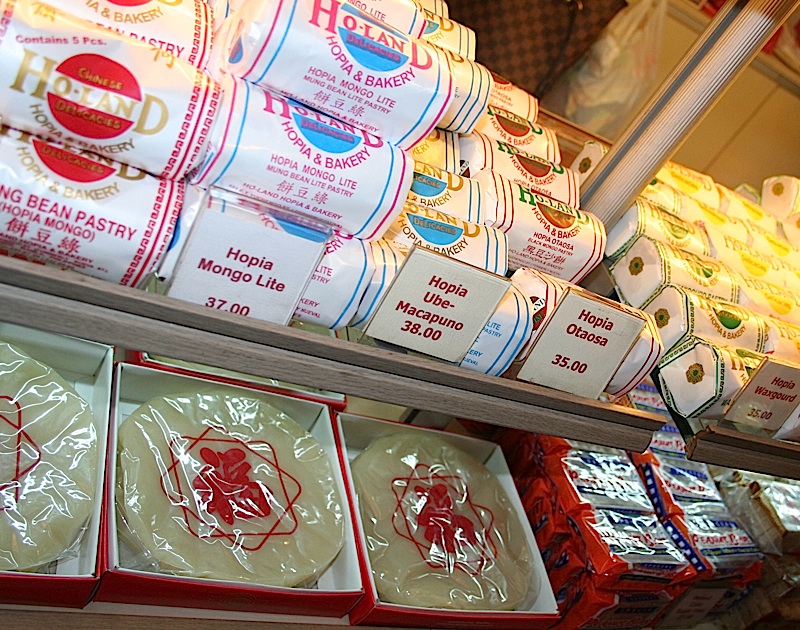

November 12, 2010
Two towers
Looking out the roof deck of Fully Booked in Bonifacio High Street, which has a skylight at the lower level, towards a pair of condominium towers, one done and one still being constructed, in Bonifacio Global City (BGC) in Taguig City.


November 11, 2010
D.I.Y. burgers
Another new little eatery in our neighborhood is The Burger Project. Choose your bun (whole wheat, potato, sesame seed), patty (tofu, chicken, beef), cheese, toppings and sauces. Quite innovative since most burger places here, franchise or independent, let you choose only the toppings and sauces at the most. The tofu burger was a disappointment, however; I'll try the chicken burger next time.


November 10, 2010
Legacy of resistance
Lapu-Lapu, a Datu of the island of Mactan in the Visayas, is considered the first Philippine national hero for having resisted Spanish colonization back in the 16th century. This statue of him in the Rizal Park, sculpted by Juan Sajid Imao who also created the Filipino-Korean Soldier Monument, stands between the Museum of the Filipino People and the Department of Tourism. He is looking directly towards the monument of that other premier Philippine national hero, Jose Rizal, after whom the park is named.

Reminding all CDP bloggers: our theme for December 1 is Time, and going back to community tradition, that of January 1 is Best Photo of 2010. The February theme poll is up too and will remain active until the end of December. Don't forget to vote!

Reminding all CDP bloggers: our theme for December 1 is Time, and going back to community tradition, that of January 1 is Best Photo of 2010. The February theme poll is up too and will remain active until the end of December. Don't forget to vote!
November 9, 2010
My world, literally
The Western end of the Rizal Park is marked by a relief map of the Philippines in a pool of water. We're at the Southern end of the country—geographically, we'd be standing in the Celebes Sea, with Malaysia on the left and Indonesia to the right and back—and the islands nearest us are those of Sulu and Basilan, which are both part of the Autonomous Region in Muslim Mindanao. I wish I could have taken a photo from a higher vantage point, but unless I stood on the Light Rail Transit's track, this was as high as I could get. I was completely fascinated with the map as a child and I still am.



And That's My World!

November 8, 2010
The art of eating
During the past three years, our neighborhood has become quite a popular location for small, independent restaurants and bars. Aside from Trellis, which has been around since the 80s, there's Pino, Tomato Kick, Friuli and Kiss the Cook, and many others that I have not yet featured here—all within walking distance or a tricycle ride away from our house. Makes for very happy taste buds but I'm beginning to despair of my waistline. Leona Art Restaurant used to be located in a different part of Quezon City but recently moved in too. Both their grilled and fried pizzas are good and we're looking forward to trying other items on their menu. I should ask the owners why they call it an "art restaurant" but I won't be surprised if it has to do with all the eclectic, quirky and lovely decorations they have in the place.
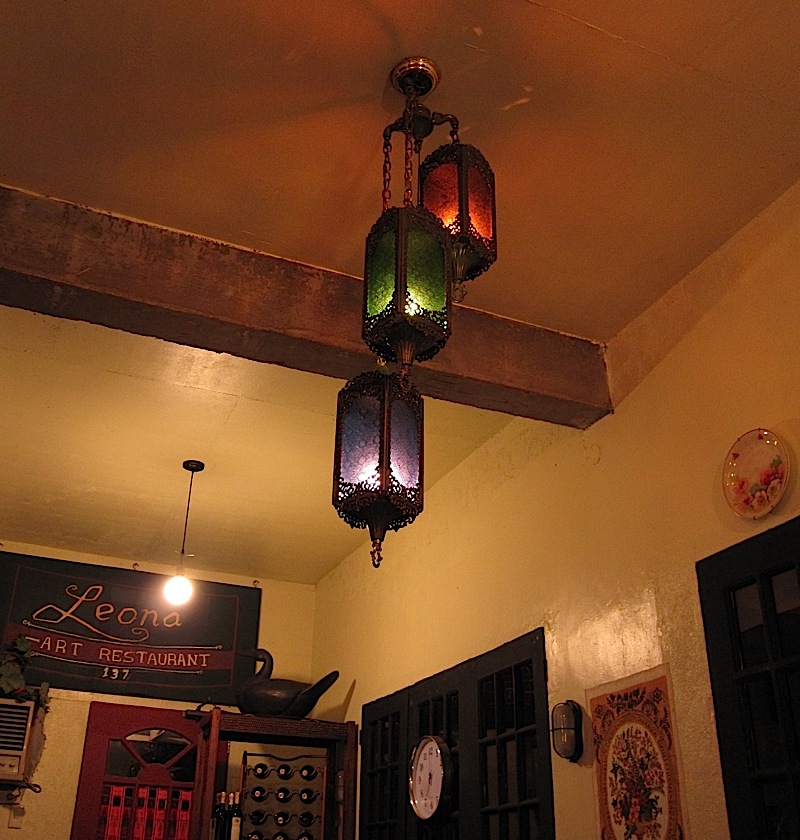

November 7, 2010
Golden dragon
The ornate ceiling of the pavilion in the Chinese Garden of the Rizal Park. I apologize for the upside down dragon, but I couldn't cross over to the other side because there was some kind of student workshop going on at the time.
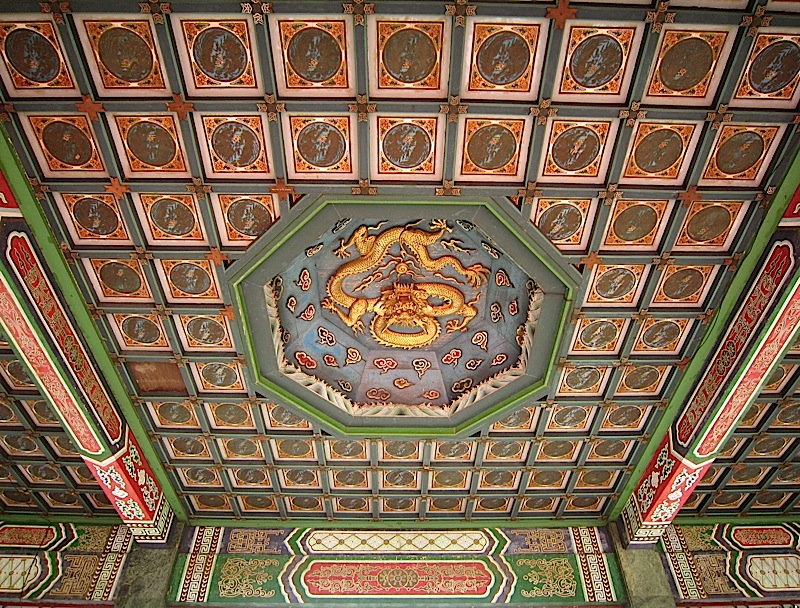

November 6, 2010
Philosophy
A statue of Confucius (551–479 BC) in the Chinese Garden of the Rizal Park.
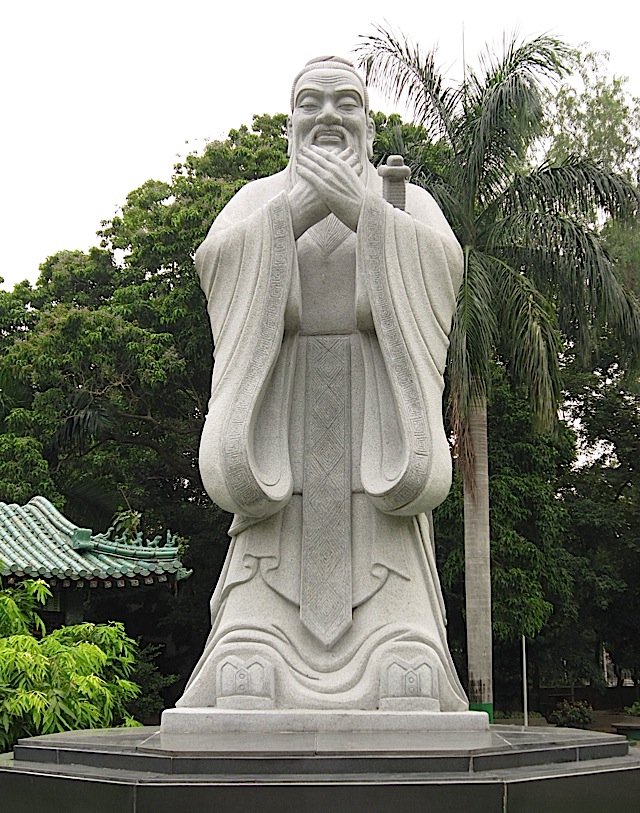

"When we see men of worth, we should think of equaling them;
when we see men of a contrary character,
we should turn inwards and examine ourselves."
when we see men of a contrary character,
we should turn inwards and examine ourselves."
November 5, 2010
Of glass and light
Inside the Quezon City branch of Alba Restaurante Español. I just love the wine bottle holder that they built into the wall separating the foyer from the main dining room.


November 4, 2010
Bienvenidos!
Alba Restaurante Español probably has the best-value weekend lunch and dinner buffets in Metro Manila. The buffet always has paella and includes their most popular meat dishes—Cochinillo Asado (oven-roasted suckling pig), Lengua Sevillana (stewed ox tongue with mushrooms and olives in sherry gravy sauce) and Callos a la Madrileña (stewed ox tripe in tomato sauce), among others. They also offer several desserts, including their yummy Canonigo (soft meringue cake with vanilla custard sauce). All for only a third of what hotel restaurant buffets cost nowadays.
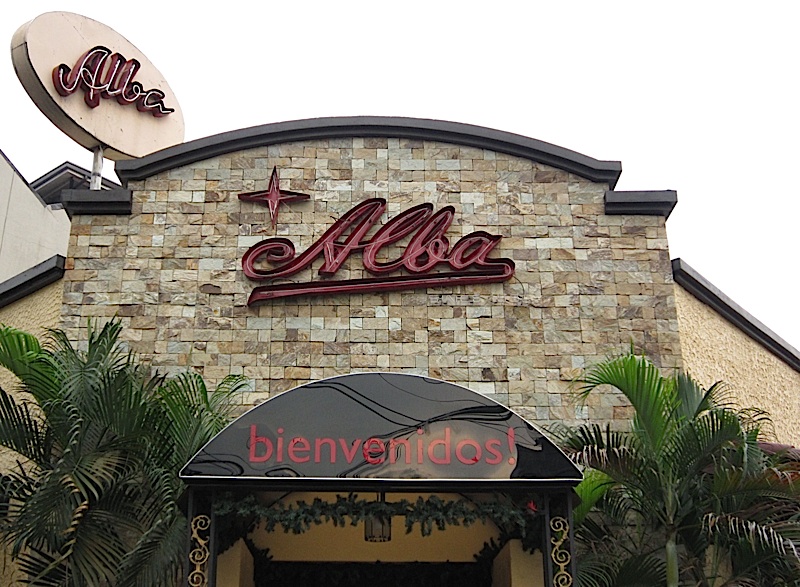

November 3, 2010
Rat Pack
As Francisca pointed out in my DQ ice cream cake post, Halloween is gaining a foothold in Metro Manila. Especially in the South, villages decorate for the holiday and kids go trick-or-treating. And what's driving it? Commercialism, of course. Hotels have parties for both children and adults to increase room and banquet sales, and malls are decorated to the rafters, have special shows and even allow children to go trick-or-treating among their stores. This trio—born of a marriage between a ghost and a pumpkin, apparently—was greeting shoppers at SM City North EDSA mall's Sky Garden. Somehow, they reminded me of Dean Martin, Sammy Davis Jr. and Frank Sinatra.
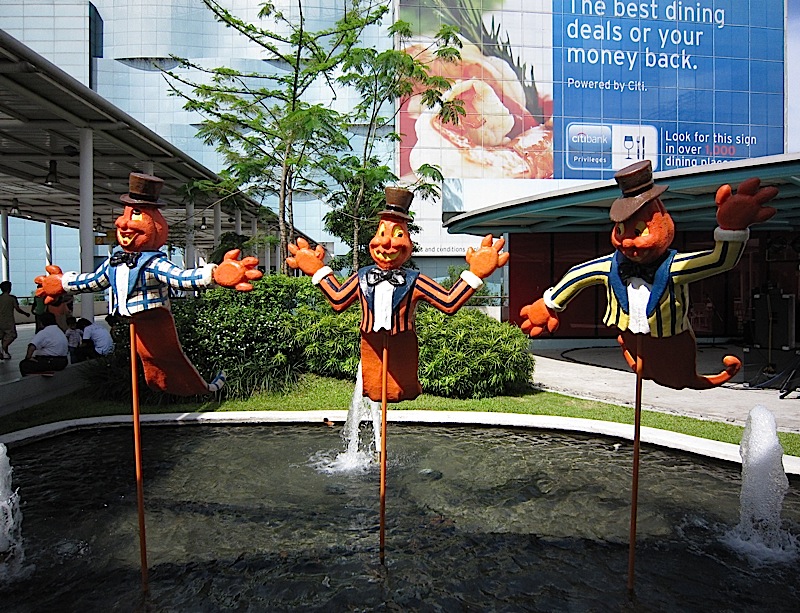

November 2, 2010
A perfect day for a picnic
In the Roman Catholic calendar, November 1 is All Saints Day and November 2 is All Souls Day. The difference is a matter of faith and theological doctrine, and too long to discuss here, so just follow the links to Wikipedia if you would like to know more. Whether Catholic or not, however, most Filipinos spend November 1, a holiday in the Philippines, at the graves of their loved ones. And except for some prayers, there's usually nothing solemn about it either. The day becomes a reunion of sorts for family and friends, with food and drinks, and lots of talk and laughter. No, it's not disrespect. Rather, think of it as thanksgiving and a celebration of life—both of those who have died and those who are still here. One thing I'm glad about though is that Loyola Memorial Park has finally banned blaring music—hearing more than a dozen songs playing loudly at the same time can drive one crazy. Families who expect to spend the entire day at the cemetery rent tents to provide shelter from either the sun or rains, either of which we can get at this time of the year. Because I don't like crowds, I went to visit my parents' graves on October 31, which was hot and sunny. I'm glad I did because it was drizzly the whole day yesterday.
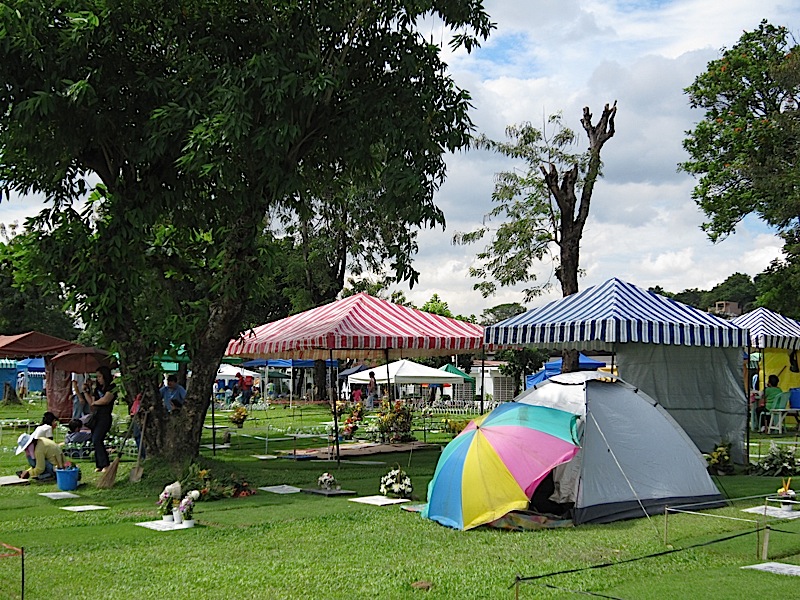

November 1, 2010
Spanish carriage for a Spanish city
THEME DAY: PUBLIC TRANSPORTATION • The kalesa is a horse-drawn carriage introduced to the Philippines by the Spaniards in the 18th century. It is still used as public transportation in certain parts of Manila, especially in the district of Binondo, but fancier ones like this—more properly called a carruaje—are used mostly for sightseeing in the old walled city of Intramuros. This man was waiting for tourists at the nearby Rizal Park.

See what people all over the world use as public transportation. Click here to view thumbnails for all participants.

See what people all over the world use as public transportation. Click here to view thumbnails for all participants.
October 31, 2010
Deliciously creepy
Even though we do not celebrate Halloween in the Philippines, it gives a perfect excuse for getting a yummy ice cream cake from Dairy Queen. This particular design is great for creeping out other people too—it turns your teeth and tongue black.


Happy Halloween!
October 30, 2010
Zero
Kilometer Zero—that point from where all distances in a country are measured—in the Philippines is right across the Rizal Monument. Does your country have one and do you know where it is?



See what's reflecting what at James' Weekend Reflections.

October 29, 2010
Pun-ny no. 3
Miss Fit. A dress and alteration shop. The business had closed but the sign was still there.
"I love to hate puns," says Hilda in Manila.
October 28, 2010
Open wide!
Another childhood favorite in the playground at the Rizal Park is this hippo. My sister, cousins and I felt like we were on top of the world when we were sitting in his open mouth. Now, I don't think I'd even fit in the tunnel in his chest. I think he needs a (paint) bath too—he looks like he's been wallowing in the mud for too long.
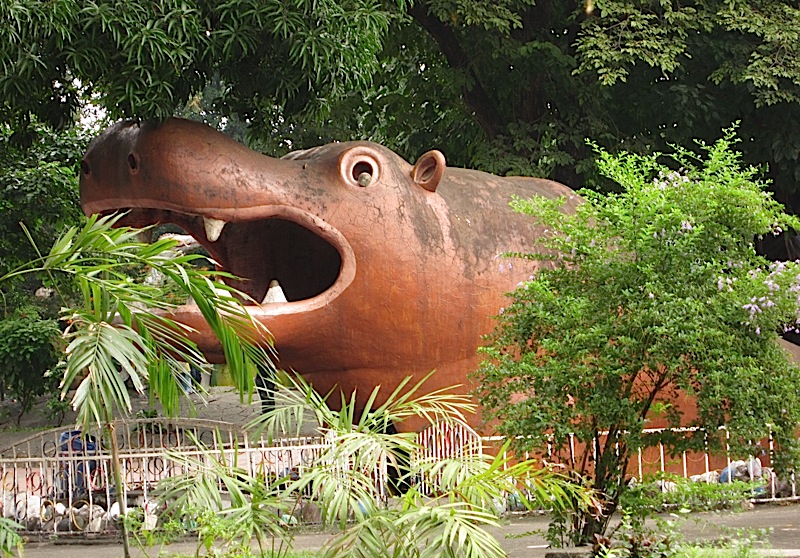

October 27, 2010
Childhood memories
I was so surprised to see that the playground in the Rizal Park that we used to frequent on weekends when we were kids is still there, and with the same structures too. This playhouse was one of my favorites.


There was an old woman who lived in a shoe.
She had so many children, she didn't know what to do;
She gave them some broth without any bread;
Then whipped them all soundly and put them to bed.
October 26, 2010
About a Filipino and two colonial governments
The remains of Philippine national hero Jose Rizal are now interred at the site where he was executed by the Spanish colonial government on December 30, 1896. The area was called Bagumbayan (New Town) then and was located just outside the old walled city of Intramuros. It is now called Rizal Park in honor of the man whose great sin was to ask—he was a writer and didn't even take up arms—that the rights of Filipinos be recognized in their own country. The bronze and granite Rizal Monument was planned and constructed during the American colonial era and designed by the Swiss sculptor Richard Kissling. It is guarded continuously by ceremonial guards called the Kabalyeros de Rizal (Knights of Rizal).
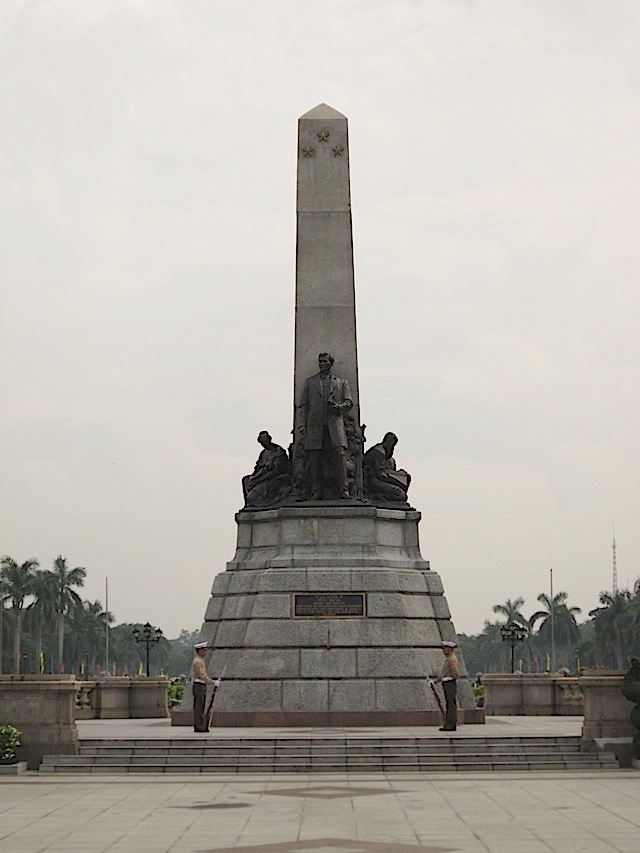

October 25, 2010
Ironic
Swatch installed a gigantic watch in Rizal Park commemorating the accession of Benigno Aquino III to the presidency of the Philippines in June of this year. Since his nickname is Noynoy, his presidential nickname has become P-Noy, which is a play on Pinoy, the colloquial term which we use for ourselves as Filipinos. The text written on top of the watch is "Oras P-Noy, Oras ng Pagbabago"—Time for P-Noy, Time for Change.
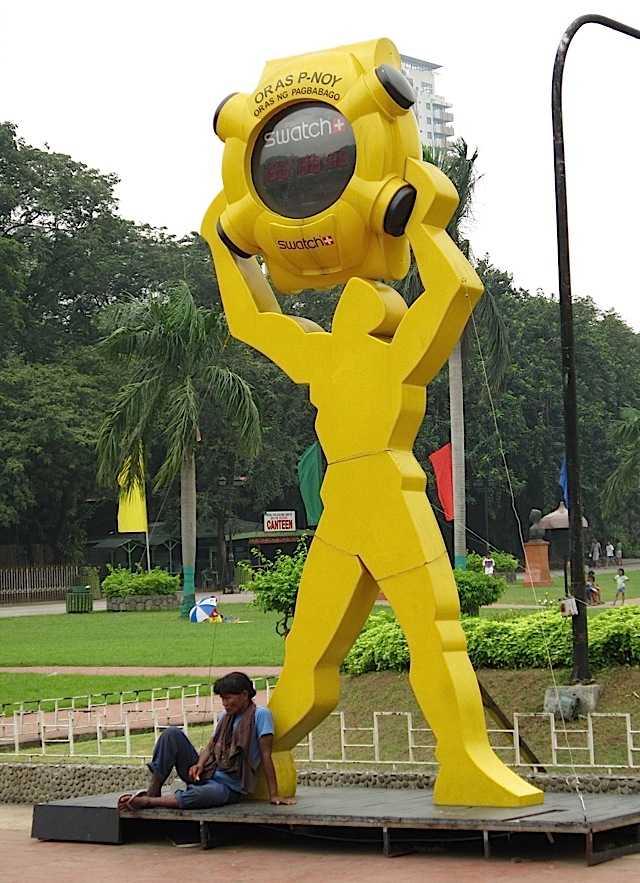

October 24, 2010
My favorite model
The geometric lines and shapes of the Ateneo Church of the Gesù make for some interesting and fun photos. This is the exterior corridor with skylights running the entire length of its facade.


October 23, 2010
Brothers in arms
Installed on the 60th anniversary of diplomatic relations between the Republic of Korea and the Philippines on September 6 of this year, the Filipino-Korean Soldier Monument at the Rizal Park was created by Filipino sculptor Juan Sajid Imao. The text on the plaque in front of the fenced area where it stands reads:
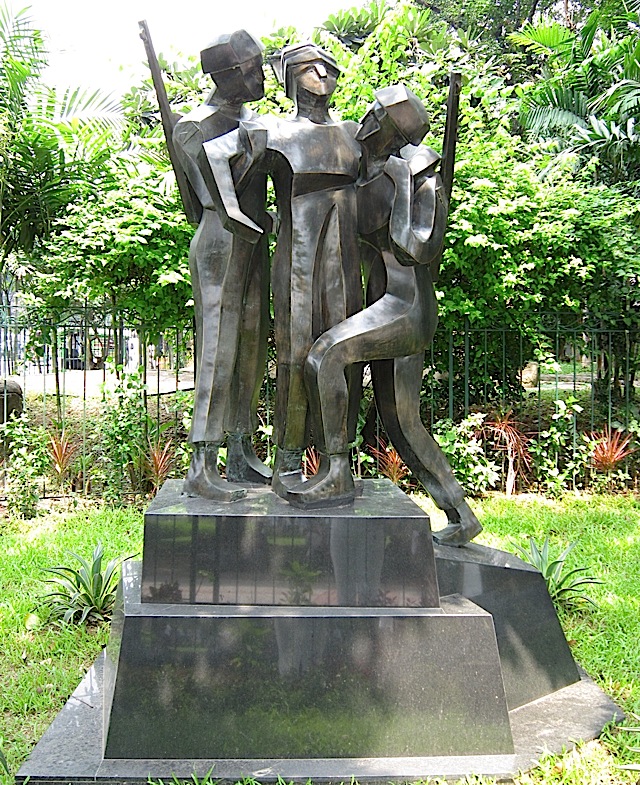

- A fitting tribute to the Filipino soldiers who fought side by side with the Korean soldiers during the Korean War (1950–1953). About 7,500 combat troops known as the Philippine Expeditionary Forces to Korea or PEFTOK, the 4th largest force under the United Nations Command, were sent to defend South Korea from a communist invasion by North Korea. The monument shows two Filipino soldiers helping a wounded Korean comrade to symbolize the greatness of the Filipino spirit despite the war and the special camaraderie shared by the two nations.

See what's reflecting what at James' Weekend Reflections.

October 22, 2010
Didn't stop them
I had to wait a bit before getting the photo of the Museum of the Filipino People which I posted the other day because of this group of young people who were having their own photo shoot. The entrance to the museum is at the back of the building because it is nearer the National Art Gallery, and these stairs are cordoned off by a rope with signs that say "No Entry."
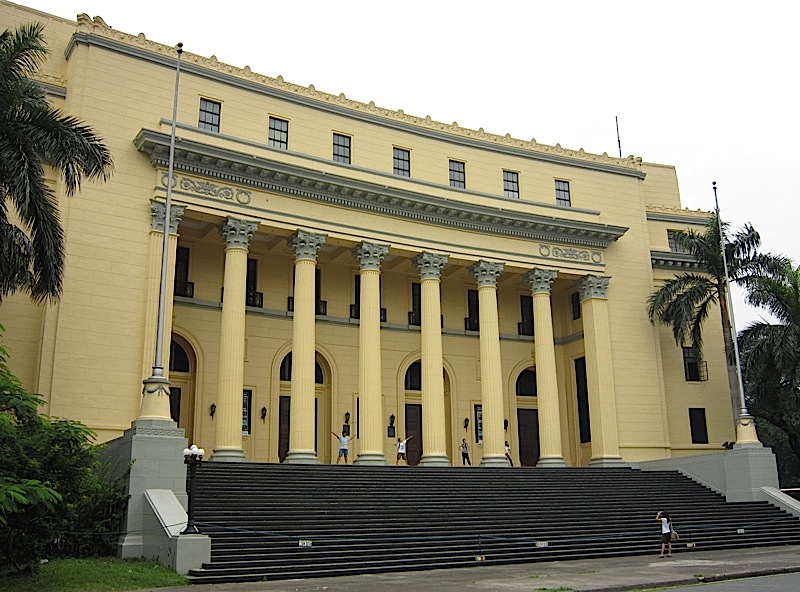

October 21, 2010
Twin
Right across yesterday's Museum of the Filipino People is the headquarters of the Department of Tourism.
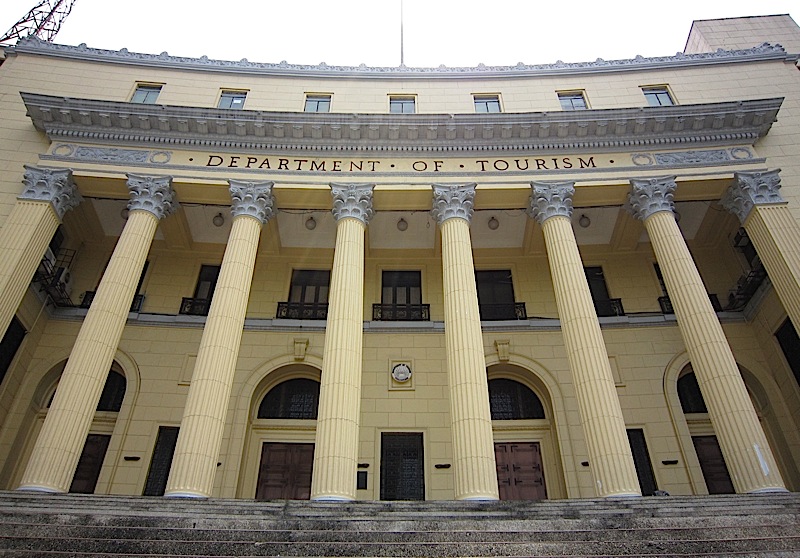

October 20, 2010
Grand pastel
Last year, I was able to post some detail shots of the old Finance Building, which is now the Museum of the Filipino People. Here is the facade in its entirety. The building has since gotten a fresh coat of creamy yellow paint which, according to arts advocate and heritage conservationist John Silva, was its original color. They discovered it by carefully peeling away all the layers of paint that its walls and columns had accumulated over the decades. And no, it's not curved and I don't know why my photos of wide buildings usually end up like this.
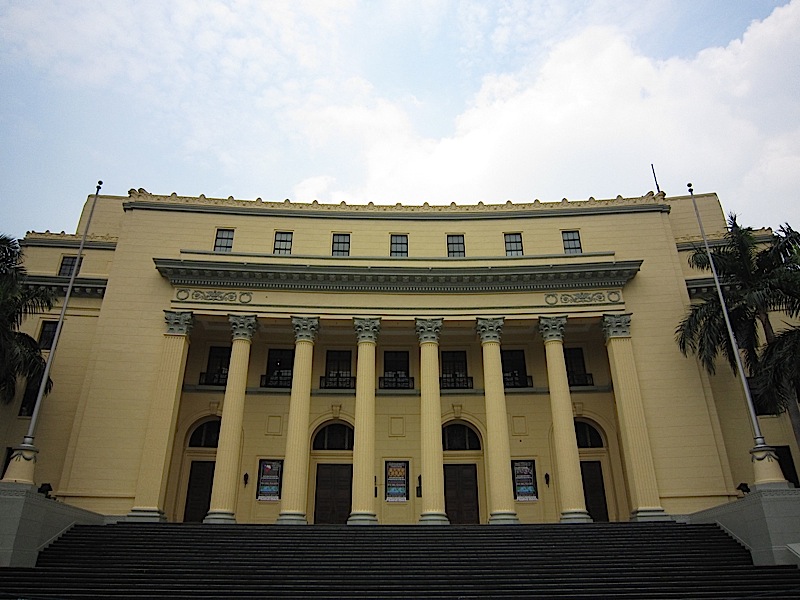

October 19, 2010
Huge
The Quirino Grandstand at the Rizal Park is traditionally where the presidents of the Philippines take their oath of office and deliver their first address to the nation. It is named after our 6th president, Elpidio Quirino, who served from 1948 to 1953. With a 10-hectare grassy field in front of it, the Quirino Grandstand has been the venue of many important cultural, religious and political events.
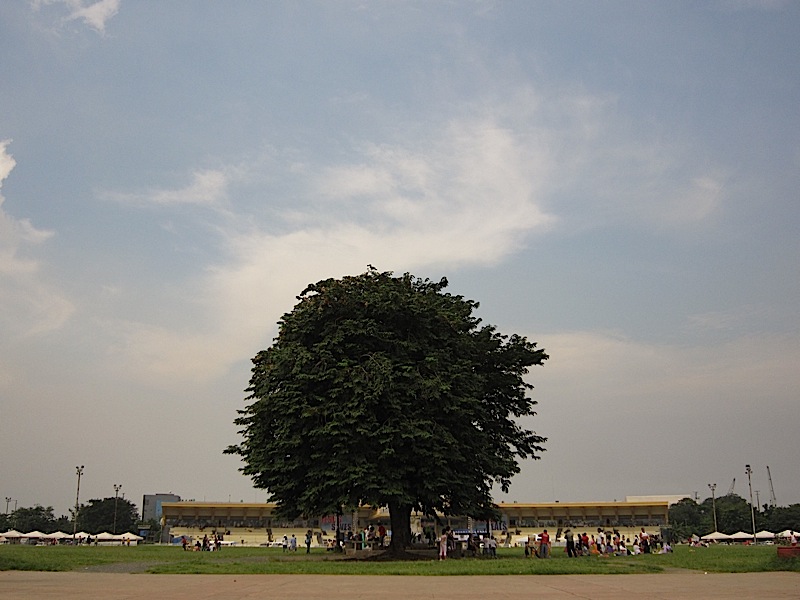


And That's My World!

October 18, 2010
If walls could talk
Built in 1908–1912, the Manila Hotel is the oldest premiere hotel in the Philippines. It was part of American architect and city planner Daniel Hudson Burnham's plan for the City of Manila which included neo-classical government buildings (like the old Finance, Legislative and Post Office buildings) and a large park, and was designed by American architect William Edward Parsons. Located along Roxas Boulevard, the hotel has commanding views of Manila Bay, the old walled city of Intramuros and Rizal Park. From 1935 to 1941, Manila Hotel was the residence of Gen. Douglas MacArthur, and the MacArthur Suite, which displays some mementos of his and of the war, is one of the most lavish in the hotel.

Reminding all City Daily Photo bloggers again: our theme for November 1 is Public Transportation, and don't forget to vote for the December theme!

Reminding all City Daily Photo bloggers again: our theme for November 1 is Public Transportation, and don't forget to vote for the December theme!
October 17, 2010
Rising from the ashes
For my last post about the Ateneo School of Management Business Accelerator (SOMBA) Program, I am featuring a product that is very different from everything else that I've posted this past week. Envirobloxx are concrete masonry units (better known as cinder blocks in the U.S. and hollow blocks here in the Philippines) made of cement, lahar (volcanic ash flow—we still have lots from the 1991 Mount Pinatubo eruption) and rice hull ash. The result is a cheaper, lighter block that does not compromise on strength. I also like Envirobloxx's interlocking design, which should make wall construction easier. This is a product which I hope construction companies, architects, civil engineers and hardware stores will pick up fast. My husband and I have no need for hollow blocks right now, but you can be sure that I'm keeping their brochure and business card for the day when we do need them.
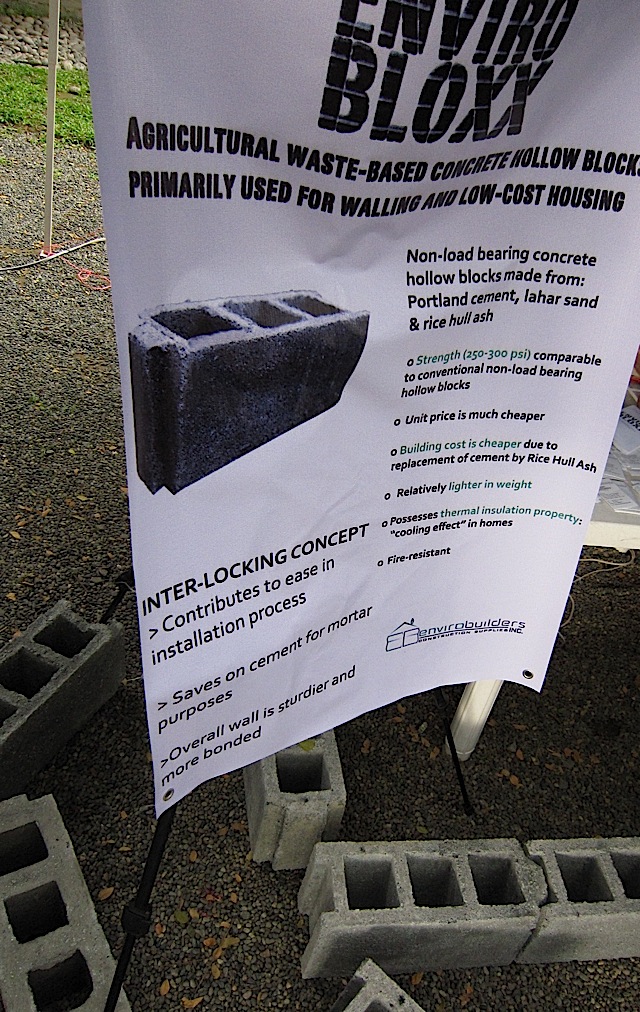
Envirobuilders Construction Supplies Inc. developed and markets Envirobloxx. They can be emailed at envirobuildersinc@gmail.com.
The AY 2010–2011 SOMBA Program has more groups than the seven that I was able to feature. The complete list of companies established this academic year can be found at jgsomba.tk. And to all the students in the program: you have such fantastic ideas and products, and I love that you all care about the environment and the less privileged of our countrymen so much. I wish your companies much success and I hope that all your products fly off the shelves!

Envirobuilders Construction Supplies Inc. developed and markets Envirobloxx. They can be emailed at envirobuildersinc@gmail.com.
The AY 2010–2011 SOMBA Program has more groups than the seven that I was able to feature. The complete list of companies established this academic year can be found at jgsomba.tk. And to all the students in the program: you have such fantastic ideas and products, and I love that you all care about the environment and the less privileged of our countrymen so much. I wish your companies much success and I hope that all your products fly off the shelves!
October 16, 2010
Starchy food
Before I continue with my series on the Ateneo School of Management Business Accelerator (SOMBA) Program fair, I think I need to clarify one point. These students are Management majors; they are not food technologists or materials scientists. Therefore, the products that they develop are not necessarily new; in fact, they have to use existing technologies if they wish to finish their project within the stipulated year. Their mandate is to develop commercially-viable products for a specified target market. The environmental and social enterprise focus are additional, in the hope that these young men and women will mature into socially-responsible adults and entrepreneurs. That said, let's go on to the next company (just two more since I wasn't able to take photos of all the products at the fair). We all know how disposable, plastic tableware is bad for the environment; but no one can deny that they are very convenient—for parties, take-out (take-away, to-go or however you call it in your country) food, picnics, and such. A solution: disposable, starch-based eating utensils. They're not just biodegradable; they can actually be added to compost heaps. The stuff in the bowl are the starch pellets which the spoons and forks are made of. This particular product is made by a Gawad Kalinga community; this and its environmental focus defines Bioware as a social enterprise. I forgot to ask the kids though: won't the spoon melt if it's used for stirring hot drinks or eating hot soup?

Me bad. I wasn't able to get their business card so I don't have Bioware's contact information, but the SOMBA Program office should have it. Their number is (63-2) 426-6001 extension 5532.
3:20PM UPDATE: Thanks to Joey Oliver, I can now direct you to Bioware's Facebook page. Bioware is the brand and the company is called Greenature Cycle Incorporated.

Me bad. I wasn't able to get their business card so I don't have Bioware's contact information, but the SOMBA Program office should have it. Their number is (63-2) 426-6001 extension 5532.
3:20PM UPDATE: Thanks to Joey Oliver, I can now direct you to Bioware's Facebook page. Bioware is the brand and the company is called Greenature Cycle Incorporated.
October 15, 2010
Urban ethnicity
Of all the projects at the Ateneo School of Management Business Accelerator (SOMBA) Program fair last week, Ethnu was the one that made me weak in the knees, with their neo-ethnic jewelry. The materials—stone and shell beads, brass bells—are sourced from the tribes that inspired the jewelry, but the designs, created by fashion designer Louis Claparols, are very modern. They currently have three beautifully-named collections which showcase the intricate work of three Philippine ethnic tribes. On the left is Brass Dreamweavers, from the T'boli of Southern Mindanao. On the higher table at the right is People of the Earth, from the Ifugao. On the lower table is Peacock Warriors, from the Kalinga. The Ifugao and the Kalinga are two of several ethnic groups in the mountainous Cordillera region of Luzon which are known collectively as Igorot. If only for purely selfish reasons (I want those necklaces!), I want this company to succeed, but of course, it's much more than that. Any company that can bring Philippine ethnic accessories and fabrics to the world stage has my support, especially if that company applies fair trade principles in their dealings with these usually marginalized and exploited ethnic groups.

Ethnu is the brand of Ethnocentricity Incorporated. They are on Facebook and can also be emailed at ethnuaccessories@gmail.com.

Ethnu is the brand of Ethnocentricity Incorporated. They are on Facebook and can also be emailed at ethnuaccessories@gmail.com.
October 14, 2010
High fashion
Most Manileños know pandan only as a food flavoring and these young students of the Ateneo School of Management Business Accelerator (SOMBA) Program are on a mission to re-educate us. P. Nouvelle, with the help of Filipino fashion designer Arnold Galang and two partners from the Department of Trade and Industry, produces gorgeous bags made out of pandan leaves. Sustainable, ethical, green fashion—any takers, ladies?
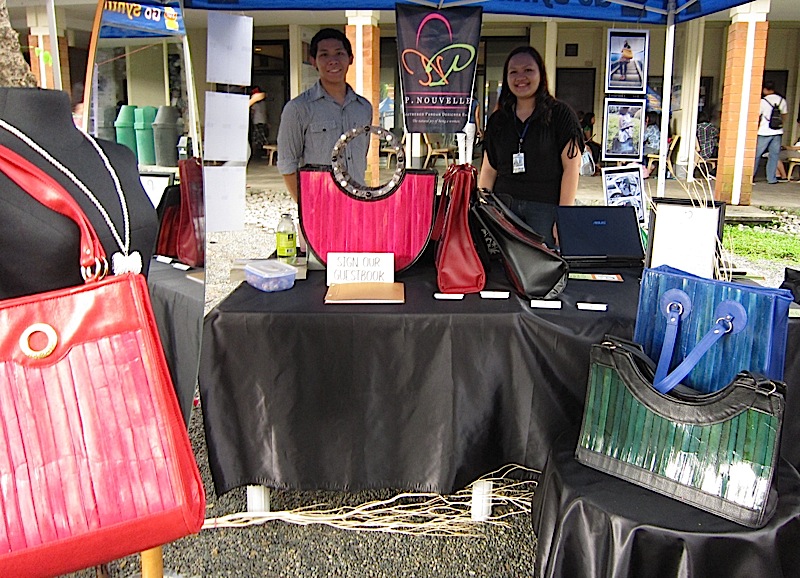
P. Nouvelle Developers Inc. can be found in Facebook and their email address is pnouvellebags@gmail.com.

P. Nouvelle Developers Inc. can be found in Facebook and their email address is pnouvellebags@gmail.com.
October 13, 2010
Paper bags
Many of the student groups in the Ateneo School of Management Business Accelerator (SOMBA) Program are concerned with the environment, sustainability and social enterprise. Like yesterday's shoes, the bags of Papelle use recycled materials. In this case, what looks like traditional basketry is actually made of handwoven paper from old newspapers and telephone directories. Don't they look fantastic? The paper bags are laminated so they're water resistant. The design on the left, which is reinforced around the body, is strong enough to carry five kilos of weight. What's more, Papelle (a French-ified play on the Tagalog word "papel" which means paper) bags now provide a livelihood to previously jobless residents of the barangay of Natipuan in Nasugbu, Batangas.
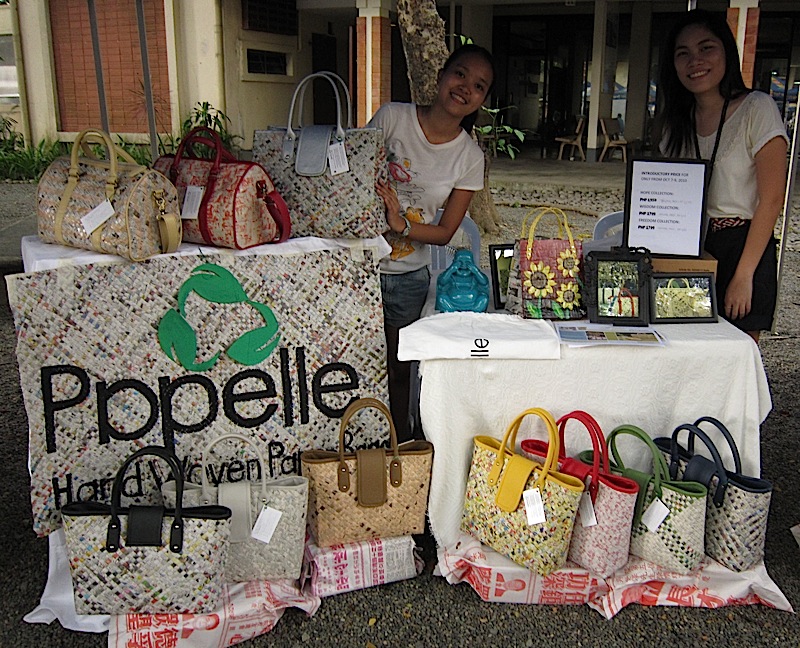
Papelle is manufactured by The Twillery, Inc. They have a website and can be emailed at papellebags@gmail.com or TheTwillery@gmail.com.

Papelle is manufactured by The Twillery, Inc. They have a website and can be emailed at papellebags@gmail.com or TheTwillery@gmail.com.
October 12, 2010
If they can stop a plane…
Continuing with the entrepreneurial fair of the Ateneo John Gokongwei School of Management: This product was a big hit among the students: casual shoes made of recycled materials. Named "Soule," the uppers are chosen from used clothing or excess fabrics, and the soles are made out of used airplane tires. It would have been interesting to find out where the kids got the tires, but they were busy with their stock when I passed their stall. According to their brochure, the soles are lightweight and durable, and I was thinking: the tires may be worn out, but only for the standard of airplanes. For people, the traction must still be quite awesome.
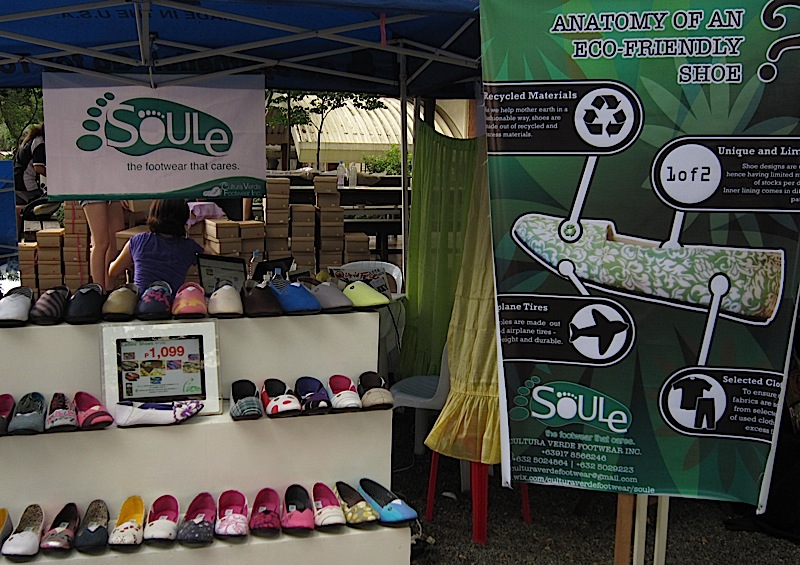
Soule is made by Cultura Verde Footwear, Inc. They have a website and their email address is culturaverdefootwear@gmail.com.

Soule is made by Cultura Verde Footwear, Inc. They have a website and their email address is culturaverdefootwear@gmail.com.
Subscribe to:
Posts (Atom)
